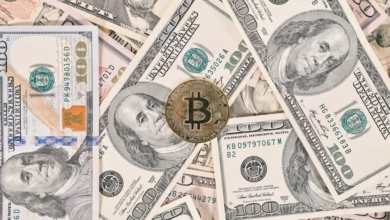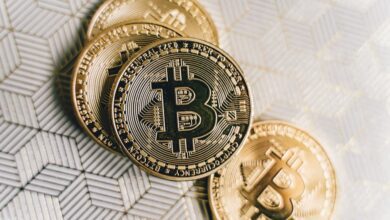The Golden Thread: Unraveling the Role of Gold in the Global Jewelry Market and Investment Trends

Gold has long been synonymous with wealth, beauty, and status, making it a cornerstone of the global jewelry market. As trends shift and consumer preferences evolve, the role of gold in jewelry is more crucial than ever. This precious metal not only enhances the aesthetic appeal of fine jewelry but also serves as a safe haven asset for investors amid economic uncertainty. In this article, we will delve into the significance of gold in the global jewelry market, examining current market trends, insights into gold prices, and the dynamics of gold investment.
We will also explore the growing importance of sustainable gold mining and recycling, highlighting efforts to ensure a responsible supply chain that minimizes environmental impact and promotes ethical practices. As we navigate through the complexities of gold—ranging from gold reserves and gold production to the influence of central banks and the rise of gold ETFs—we aim to provide a comprehensive overview of how gold continues to shape the jewelry market and investment landscape. Join us as we uncover the multifaceted role of gold in jewelry, its market dynamics, and its implications for the future of luxury and investment.
- 1. The Significance of Gold in the Global Jewelry Market: Trends and Insights
- 2. Investing in Gold Jewelry: Understanding Gold Prices and Market Dynamics
- 3. Sustainable Gold Mining and Recycling: Ensuring a Responsible Gold Supply Chain
1. The Significance of Gold in the Global Jewelry Market: Trends and Insights
The significance of gold in the global jewelry market extends far beyond its aesthetic appeal; it is deeply intertwined with cultural, economic, and investment dimensions. In recent years, gold has been recognized not only as a luxury material for beautiful jewelry but also as a safe haven asset, especially during times of economic uncertainty and inflation. This dual role enhances its attractiveness to consumers and investors alike.
Current trends indicate a growing global demand for gold jewelry, driven by cultural practices and the increasing popularity of gold as a form of investment. Many consumers are now viewing gold jewelry not just as an adornment but as a financial asset that can protect wealth against inflation and economic downturns. The appeal of gold is further bolstered by the rise of gold ETFs and gold futures, which provide investors with more accessible ways to gain exposure to gold without needing to store physical gold.
Moreover, the relationship between central banks and gold is significant. Many central banks hold substantial gold reserves, viewing gold as a crucial part of their monetary policy and a hedge against currency fluctuations. This trend supports gold market stability and influences gold prices globally.
Sustainable gold mining practices have also gained attention, with consumers increasingly demanding ethically sourced materials. The rise of gold recycling and the focus on responsible gold trade practices reflect a shift towards sustainability in the jewelry sector.
Technological advancements in gold refining and production processes are enhancing the efficiency and purity of gold, making it more appealing to both jewelers and investors. Additionally, the emergence of luxury gold items, including gold coins and collectibles, showcases the versatility of gold in catering to diverse consumer preferences.
As the gold market continues to evolve, its intrinsic value remains steadfast. Whether through physical gold in the form of jewelry, gold bullion, or innovative investment vehicles like gold coins investing, gold maintains a prominent place in the global jewelry market, ensuring its significance for years to come. The interplay between gold and cryptocurrency is also worth noting, as some investors view gold as a more stable alternative to digital currencies, further solidifying its role as a reliable asset in an increasingly volatile market.
In conclusion, the trends and insights surrounding gold in the jewelry market highlight its multifaceted nature, making it a critical component of both personal adornment and global economic stability.
2. Investing in Gold Jewelry: Understanding Gold Prices and Market Dynamics
Investing in gold jewelry offers a unique blend of aesthetic appeal and financial potential, making it an attractive option for many investors. Understanding gold prices and market dynamics is crucial for anyone considering this investment. Gold has long been recognized as a safe haven asset, particularly during times of economic uncertainty. As inflation rises and market volatility increases, gold often serves as a hedge against currency devaluation, drawing attention from central banks and individual investors alike.
Gold prices are influenced by various factors, including global gold demand, geopolitical events, and market trends. For instance, the demand for luxury gold jewelry typically spikes during festive seasons, significantly impacting gold market trends. Moreover, gold mining production and the availability of gold reserves can affect prices as well. When production is low, or when issues such as gold smuggling arise, prices may be driven higher due to scarcity.
Investors often explore different forms of gold investment, from physical gold such as gold bars and coins to more modern methods like gold ETFs and futures. These investment vehicles allow individuals to gain exposure to gold without physically holding it. However, physical gold, including gold jewelry, offers tangible value that can be appreciated not only as an investment but also as a collectible.
Sustainable gold mining practices are becoming increasingly important in the gold market analysis, as consumers seek environmentally friendly options. This trend is reflected in the growing interest in gold recycling, where old gold jewelry is melted down and refined into new pieces, reducing waste and promoting sustainability.
As the gold market evolves, investors must stay informed about gold production, refining processes, and how gold interacts with other assets, such as cryptocurrency. The relationship between gold and inflation remains a significant consideration; as prices rise, many investors turn to gold to safeguard their wealth.
In summary, investing in gold jewelry requires a comprehensive understanding of gold prices, market dynamics, and broader economic trends. By keeping an eye on global gold demand, market shifts, and sustainable practices, investors can make informed decisions that align with their financial goals while enjoying the beauty of gold jewelry.
3. Sustainable Gold Mining and Recycling: Ensuring a Responsible Gold Supply Chain
Sustainable gold mining and recycling play a crucial role in ensuring a responsible gold supply chain, addressing ethical concerns and environmental impacts associated with gold production. As global gold demand continues to rise, driven by the allure of gold jewelry, gold investment, and its status as a safe haven asset, the industry faces mounting pressure to adopt sustainable practices.
Sustainable gold mining focuses on minimizing environmental degradation and promoting social responsibility. This includes implementing technologies that reduce water usage, limit harmful emissions, and rehabilitate mining sites post-extraction. Additionally, responsible gold mining practices can help combat issues such as gold smuggling and unethical labor practices that have plagued the gold trade.
Recycling gold is another vital aspect of ensuring a responsible supply chain. Gold recycling involves recovering gold from discarded electronics, jewelry, and other products, providing an alternative to newly mined gold. This process not only helps to manage the depletion of natural gold reserves but also supports the growing trend of circular economy in the luxury gold market. By investing in gold recycling, jewelers can source gold in a more sustainable manner, thus increasing consumer trust and aligning with the values of environmentally conscious buyers.
Furthermore, as the gold market evolves, innovations in gold technology are making it easier to track and authenticate recycled gold. This transparency is essential for consumers who are increasingly aware of the ethical implications of their purchases. Gold ETFs and gold futures have also begun incorporating sustainability metrics, allowing investors to align their portfolios with responsible practices.
In summary, sustainable gold mining and recycling are integral to creating a responsible gold supply chain. By prioritizing these practices, the gold industry can meet global gold demand while ensuring ethical standards are upheld, ultimately enhancing the value of gold collectibles, physical gold investments, and luxury gold jewelry. As awareness of gold's environmental and social impact grows, consumers and investors alike are likely to favor sustainably sourced gold, influencing future gold market trends.
In conclusion, gold's enduring presence in the global jewelry market underscores its multifaceted significance, not only as a symbol of luxury and status but also as a reliable investment and safe haven asset. As we explored, the trends and insights surrounding gold highlight its critical role in shaping consumer behavior and investment strategies. Understanding gold prices and the dynamics of the gold market is essential for both novice and seasoned investors, particularly in an era where gold ETFs and gold futures represent innovative ways to engage with this precious metal.
Moreover, the importance of sustainability in gold mining and recycling cannot be overstated. With growing awareness of environmental concerns, the adoption of sustainable gold mining practices and efficient gold recycling methods will play a pivotal role in ensuring a responsible supply chain. This is crucial not only for maintaining global gold demand but also for addressing issues like gold smuggling and the ethical implications of gold production.
As we navigate through economic uncertainties, gold remains a solid investment choice, often perceived as a hedge against inflation and a reliable store of value. Central banks continue to bolster their gold reserves, reaffirming the metal's status as a cornerstone of financial security. Whether through gold jewelry, gold coins investing, or the acquisition of gold bullion and bars, individuals can seek to diversify their portfolios while embracing the beauty and history that gold represents.
Ultimately, as the jewelry market evolves with advancements in gold technology and changing consumer preferences, the timeless allure of gold will continue to captivate and inspire. As we look to the future, understanding the gold market analysis and staying informed about gold market trends will be essential in making informed decisions, whether for personal adornment or strategic investment.





